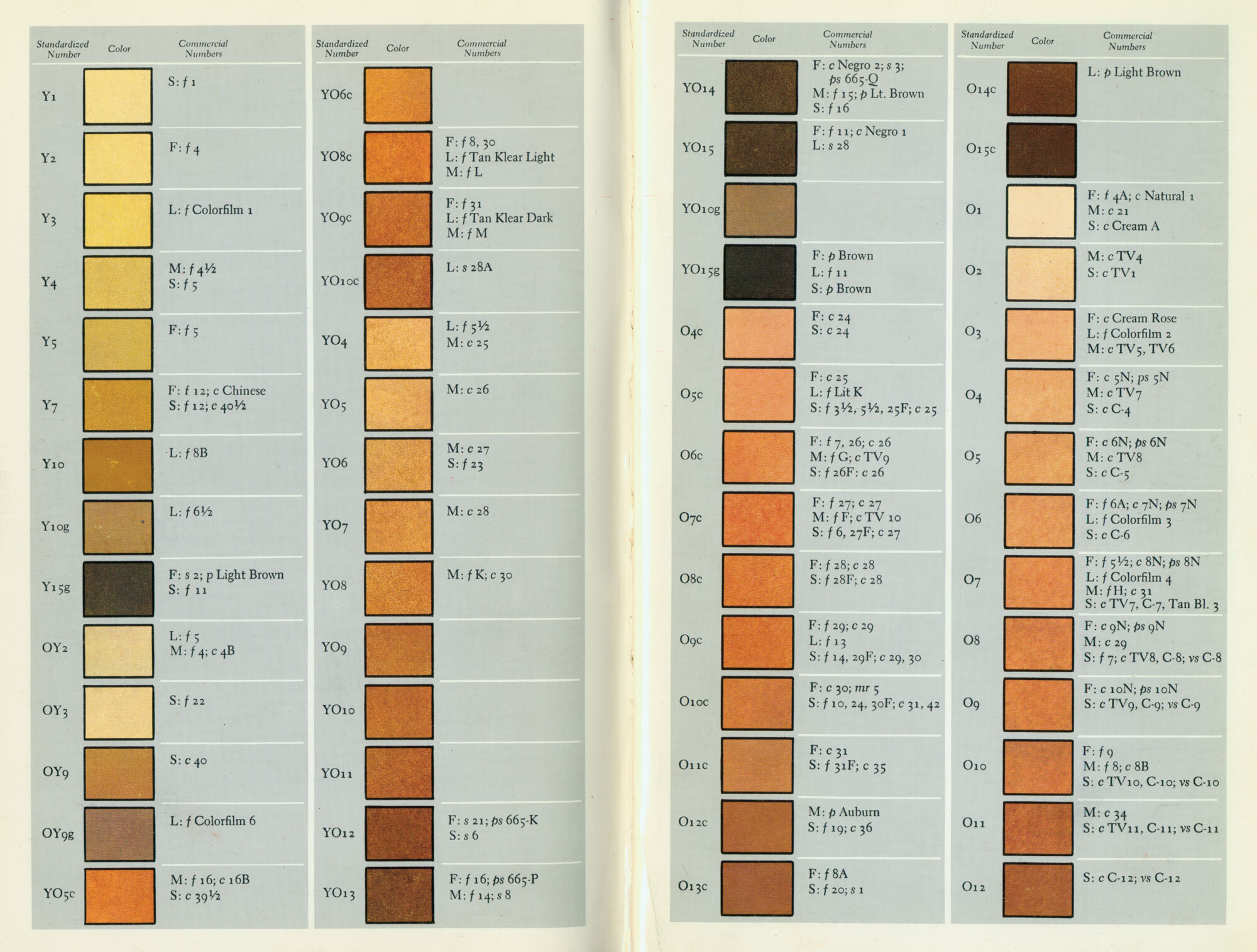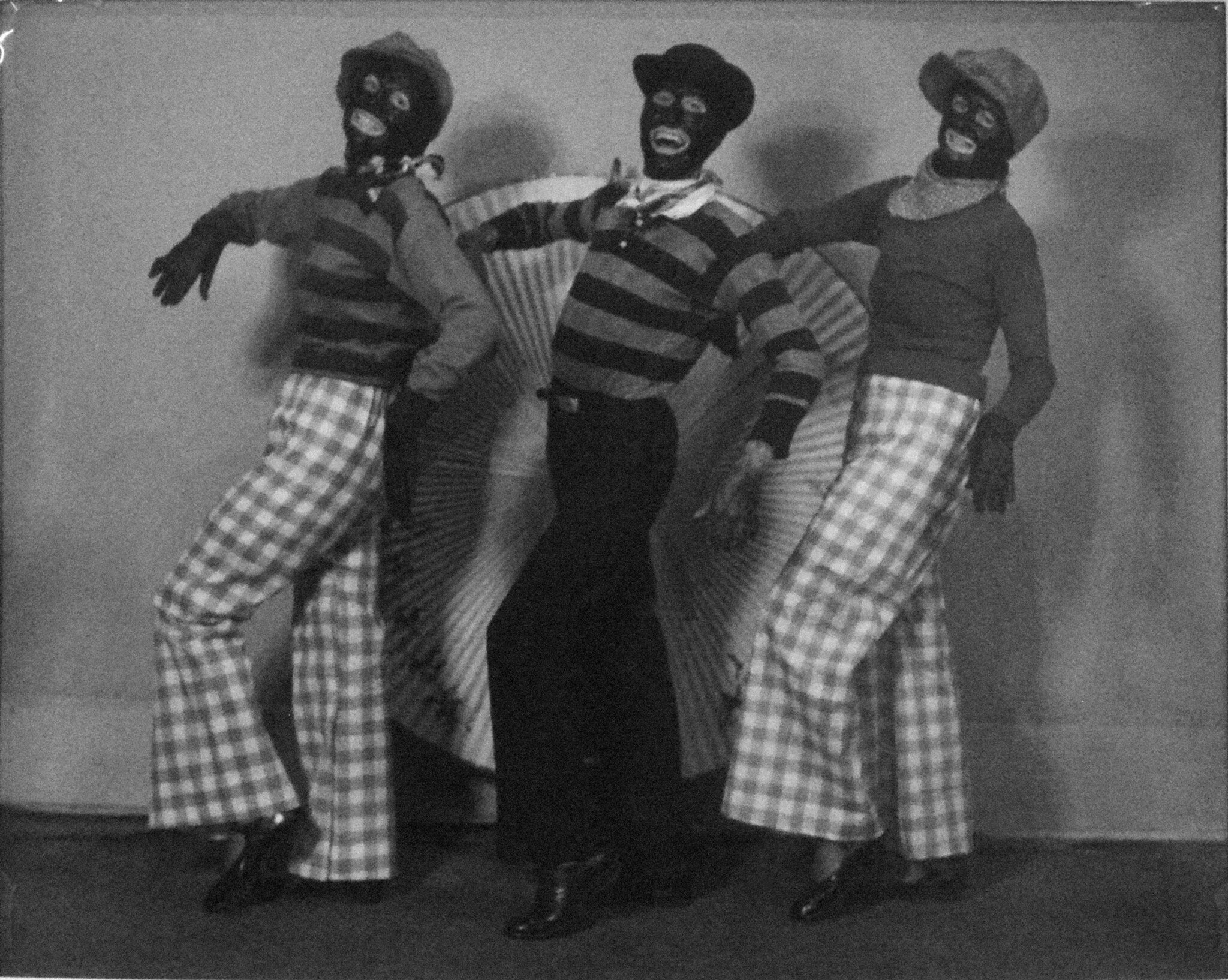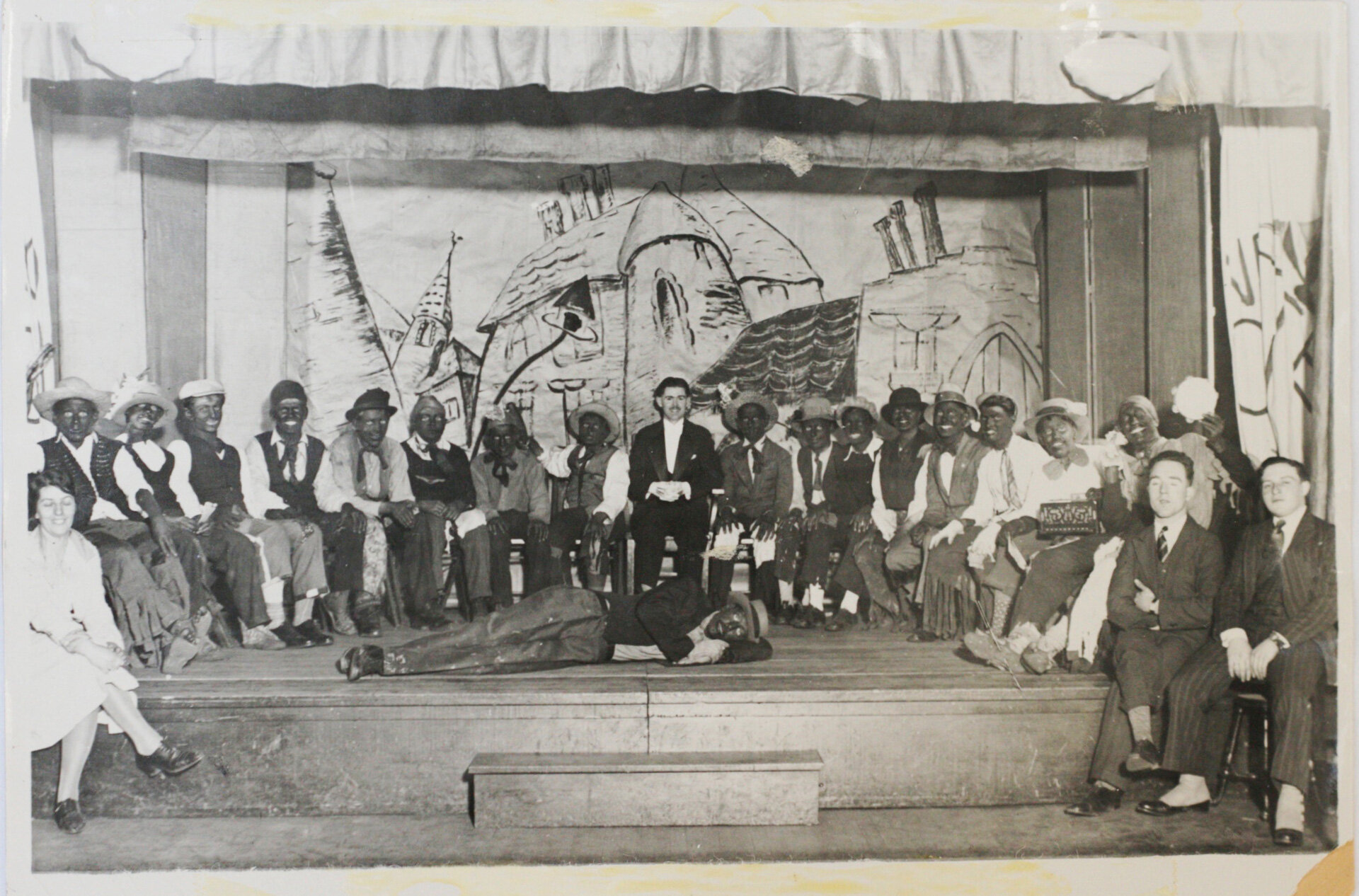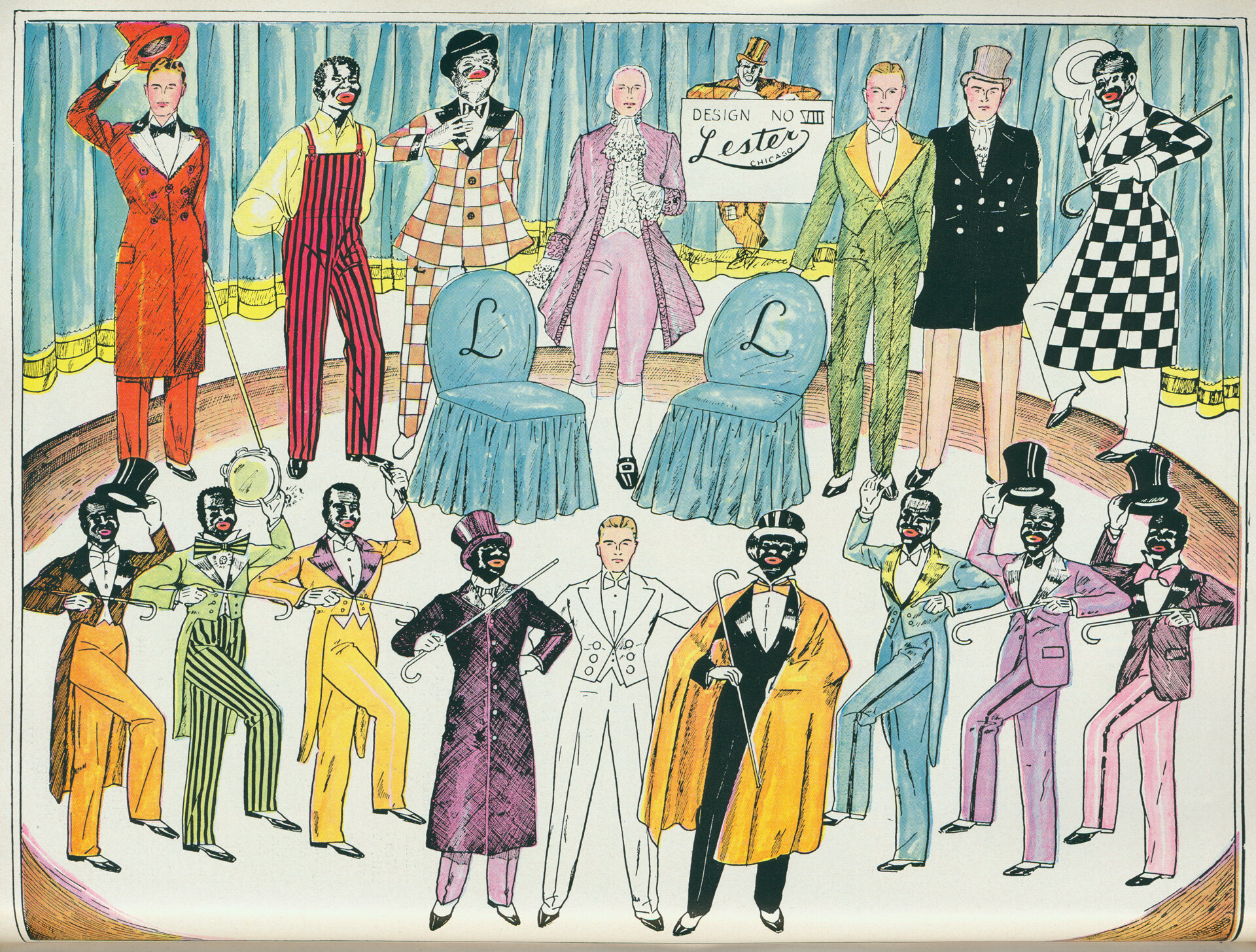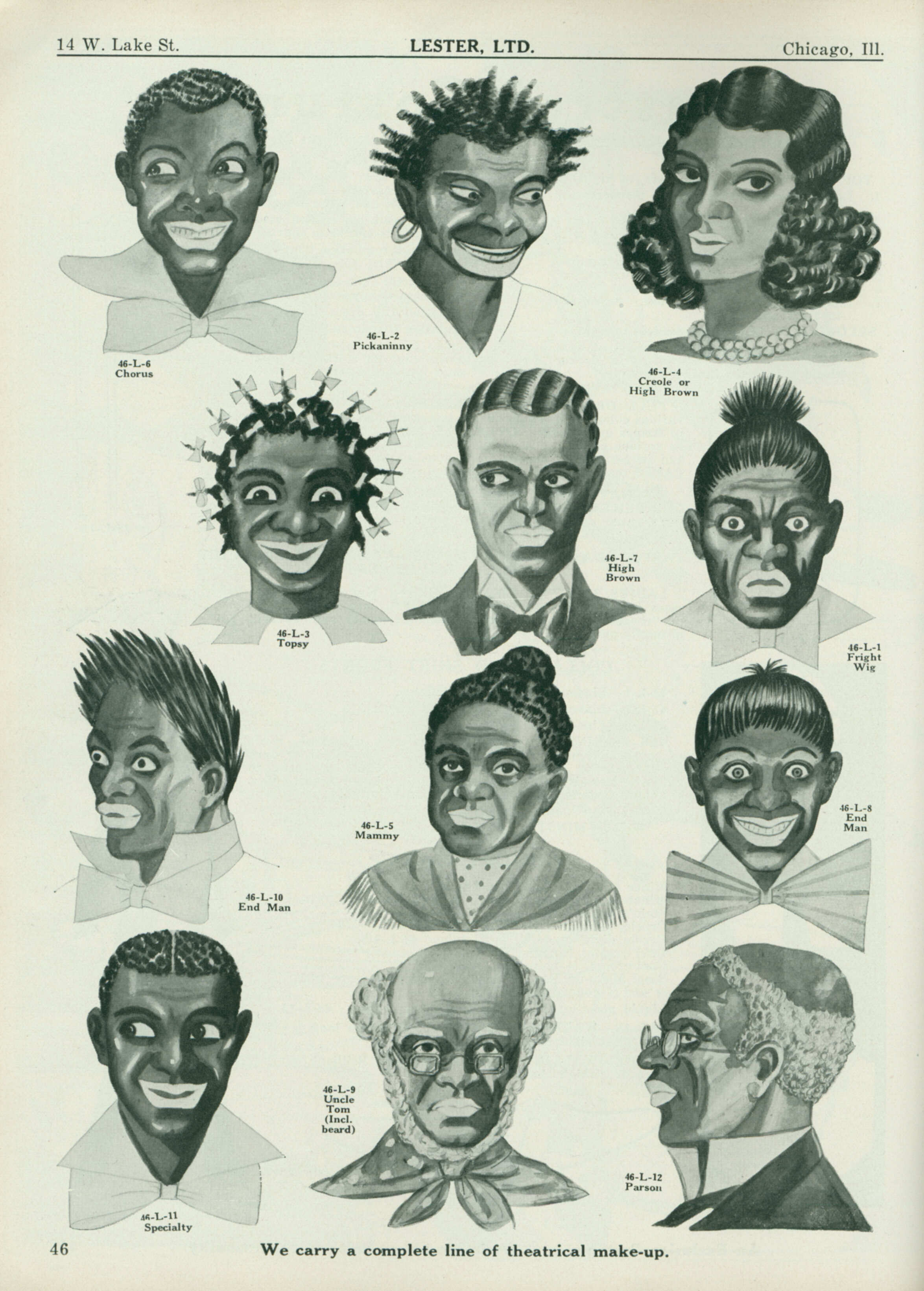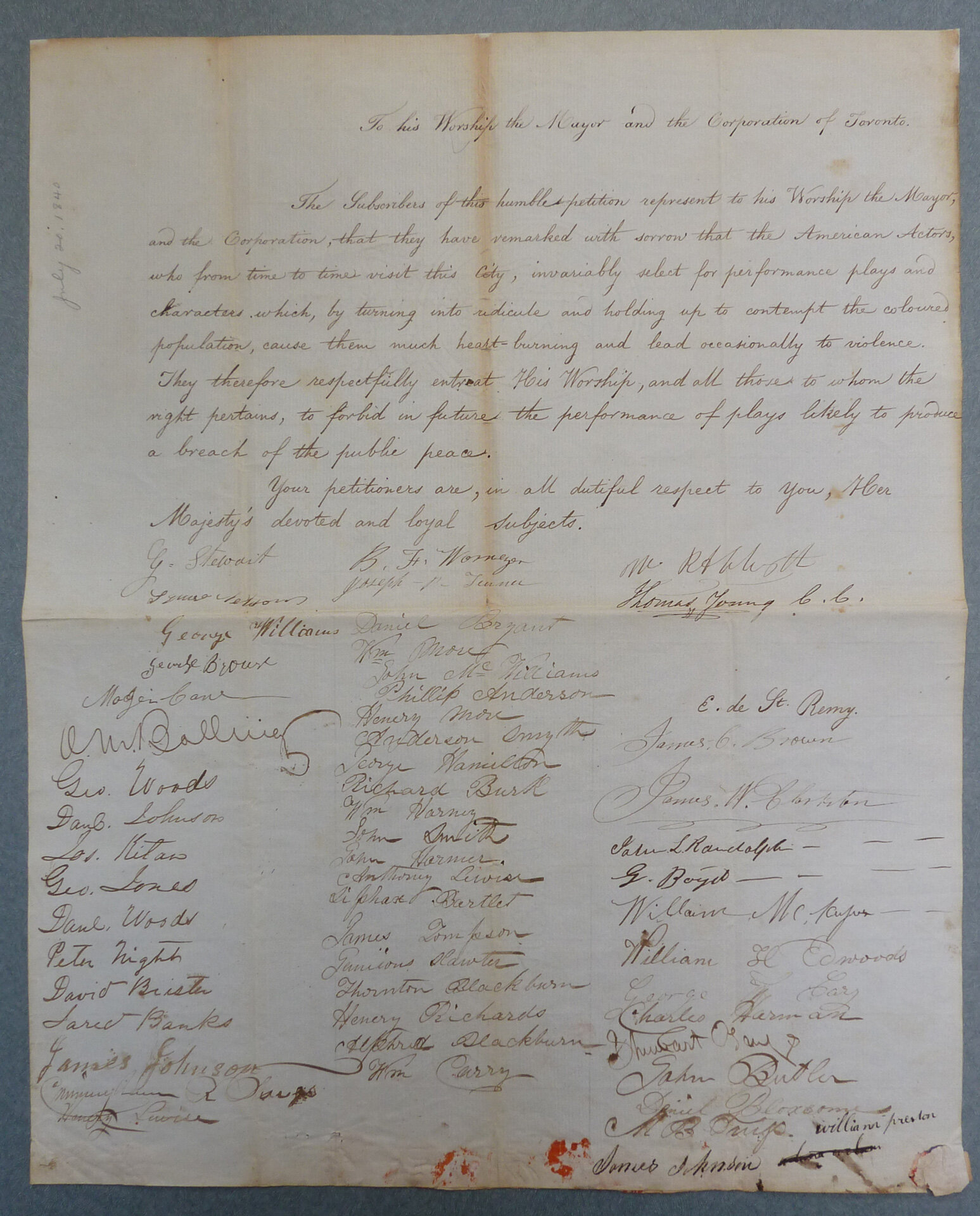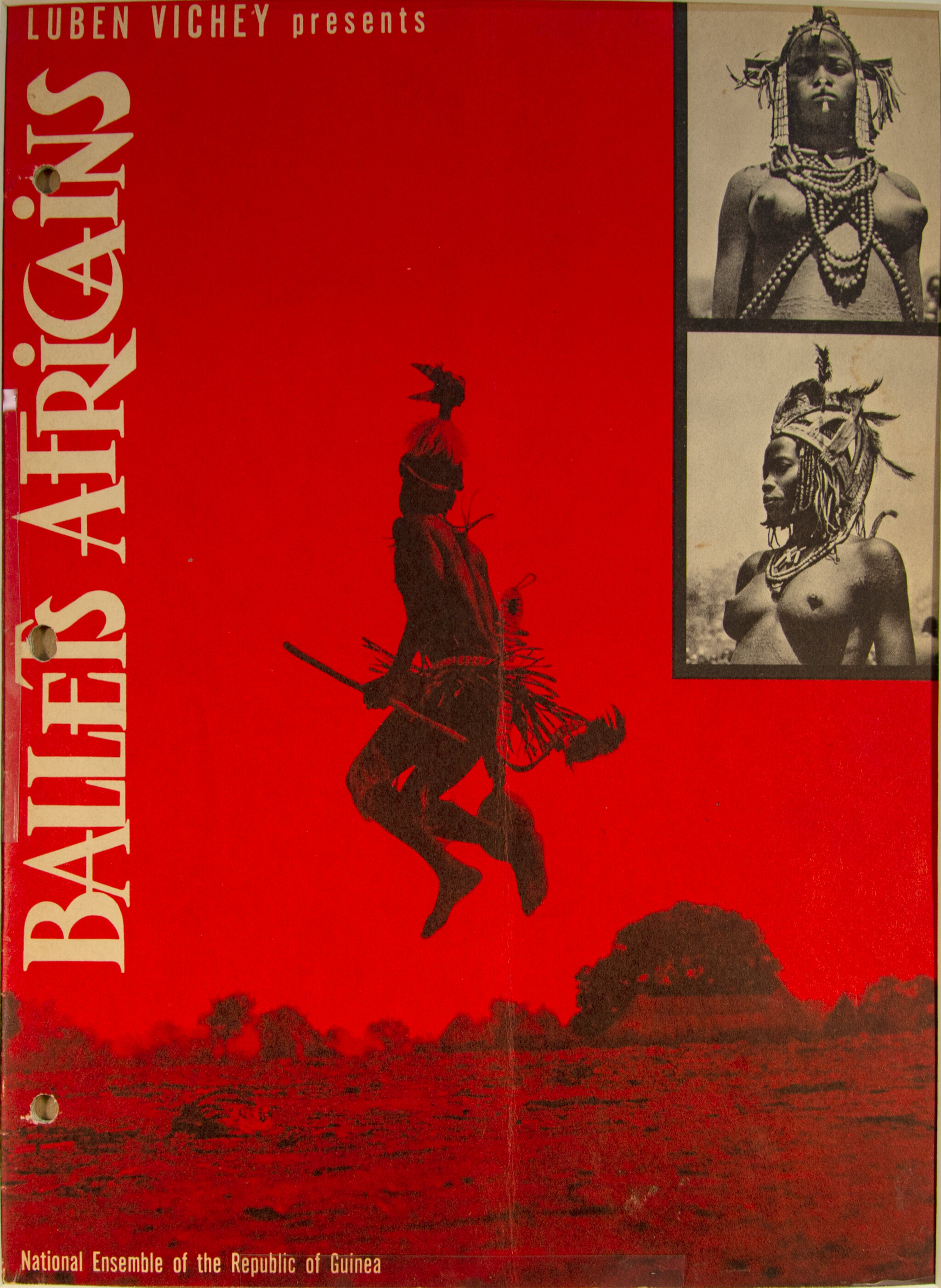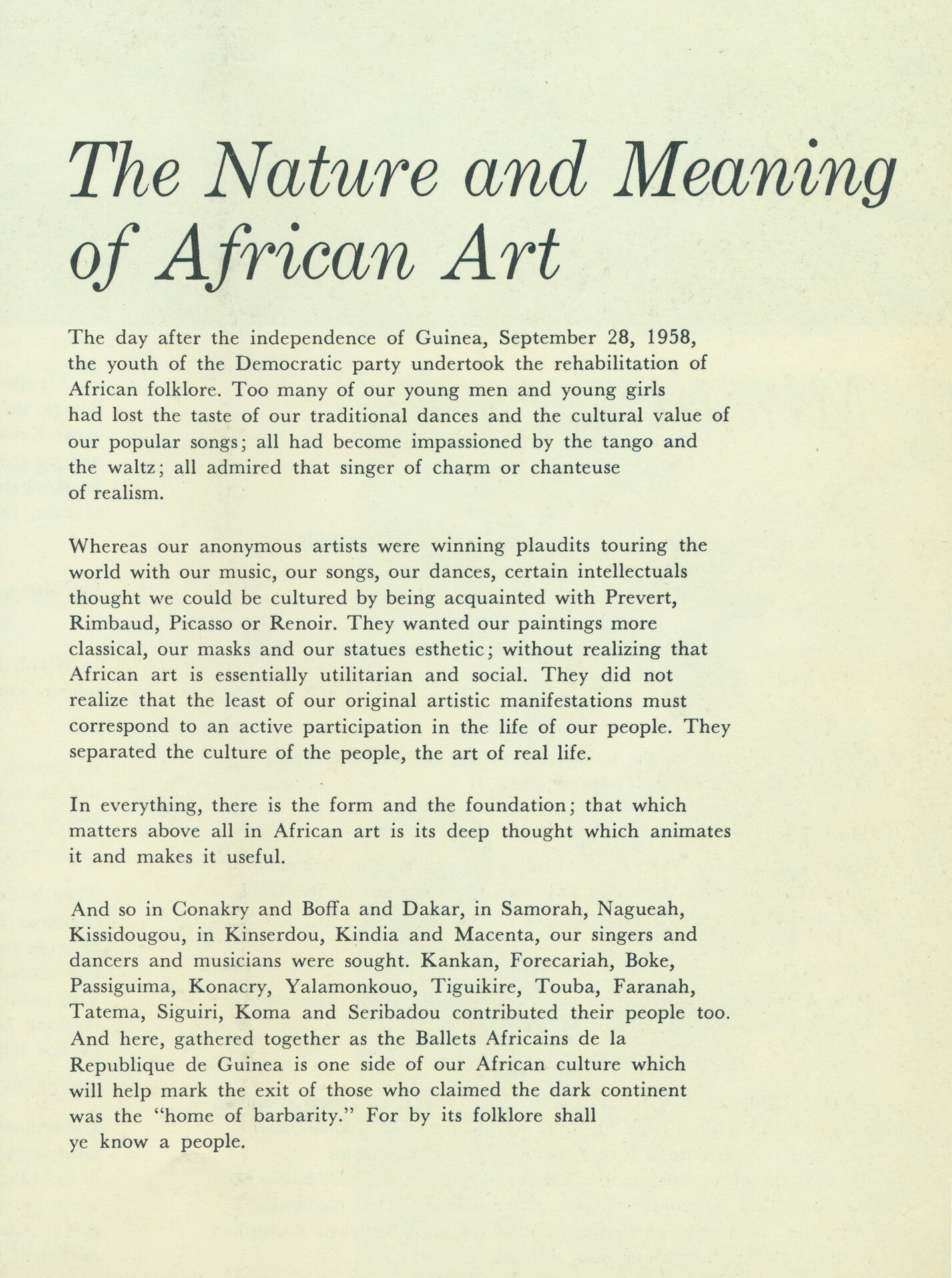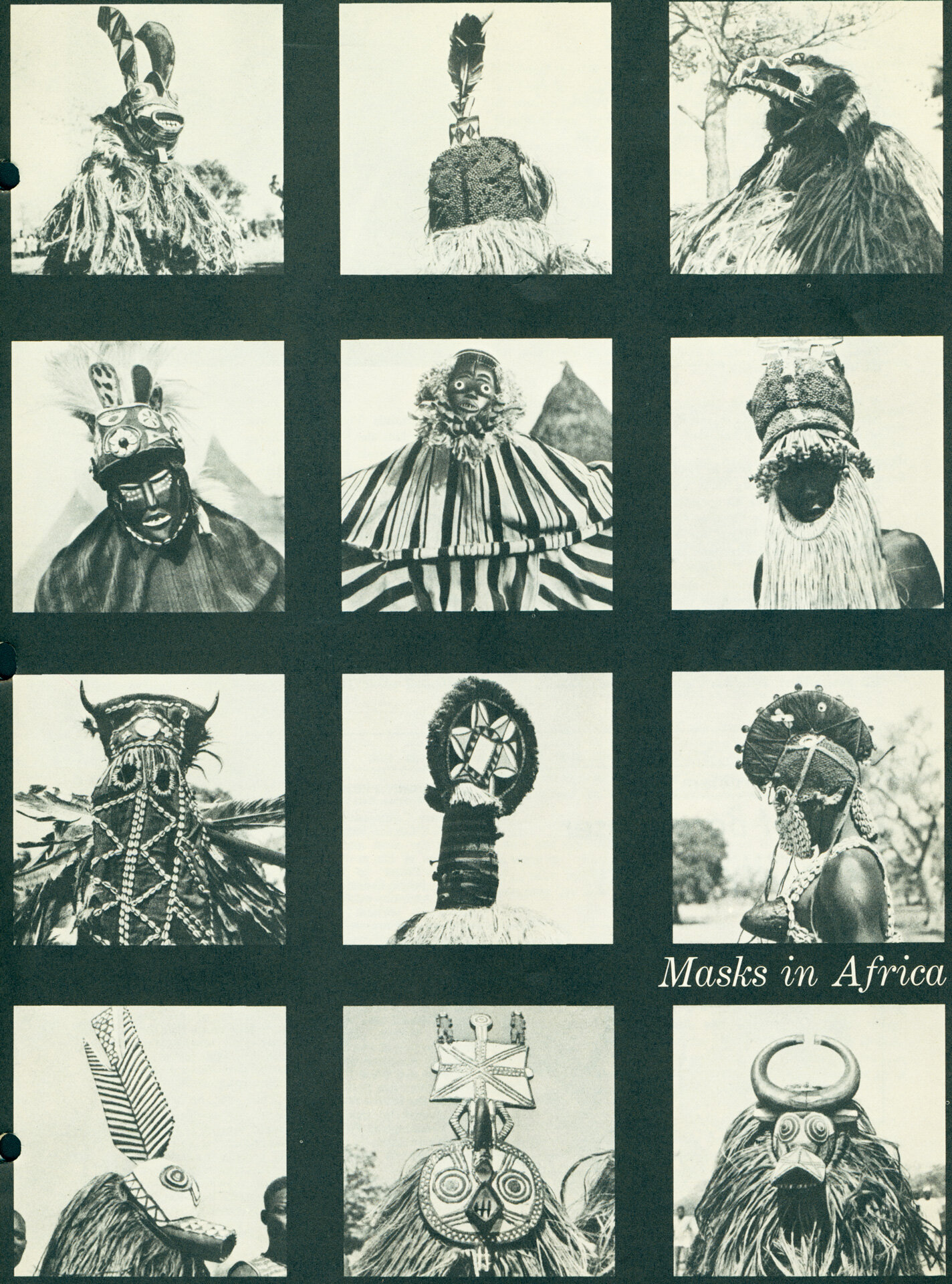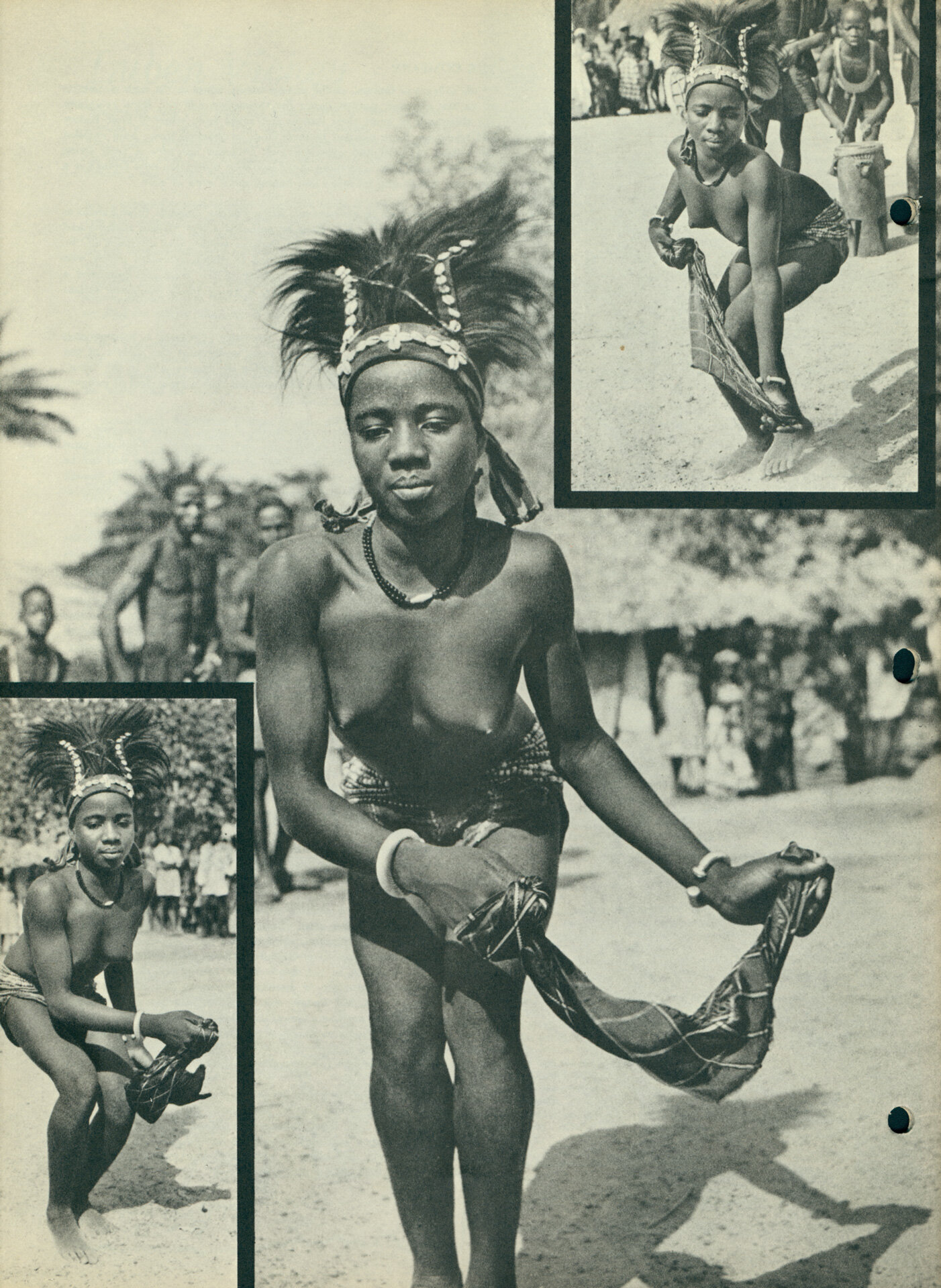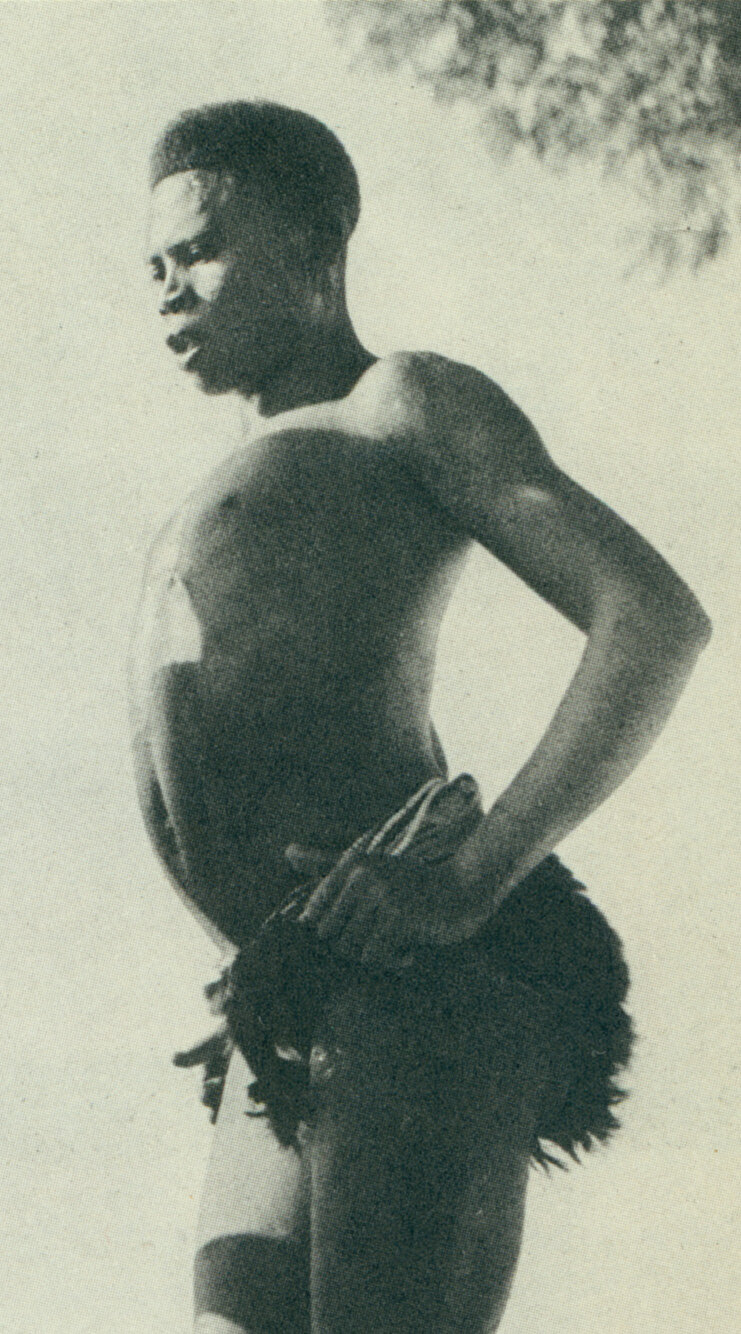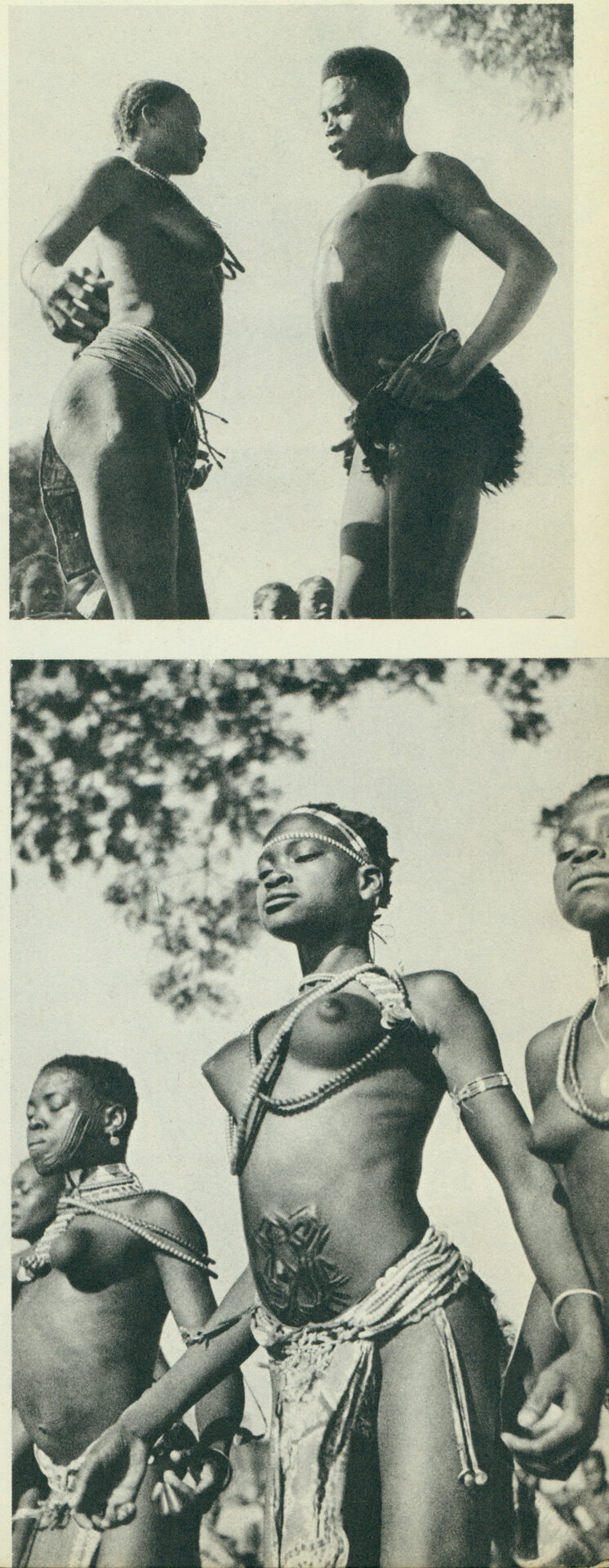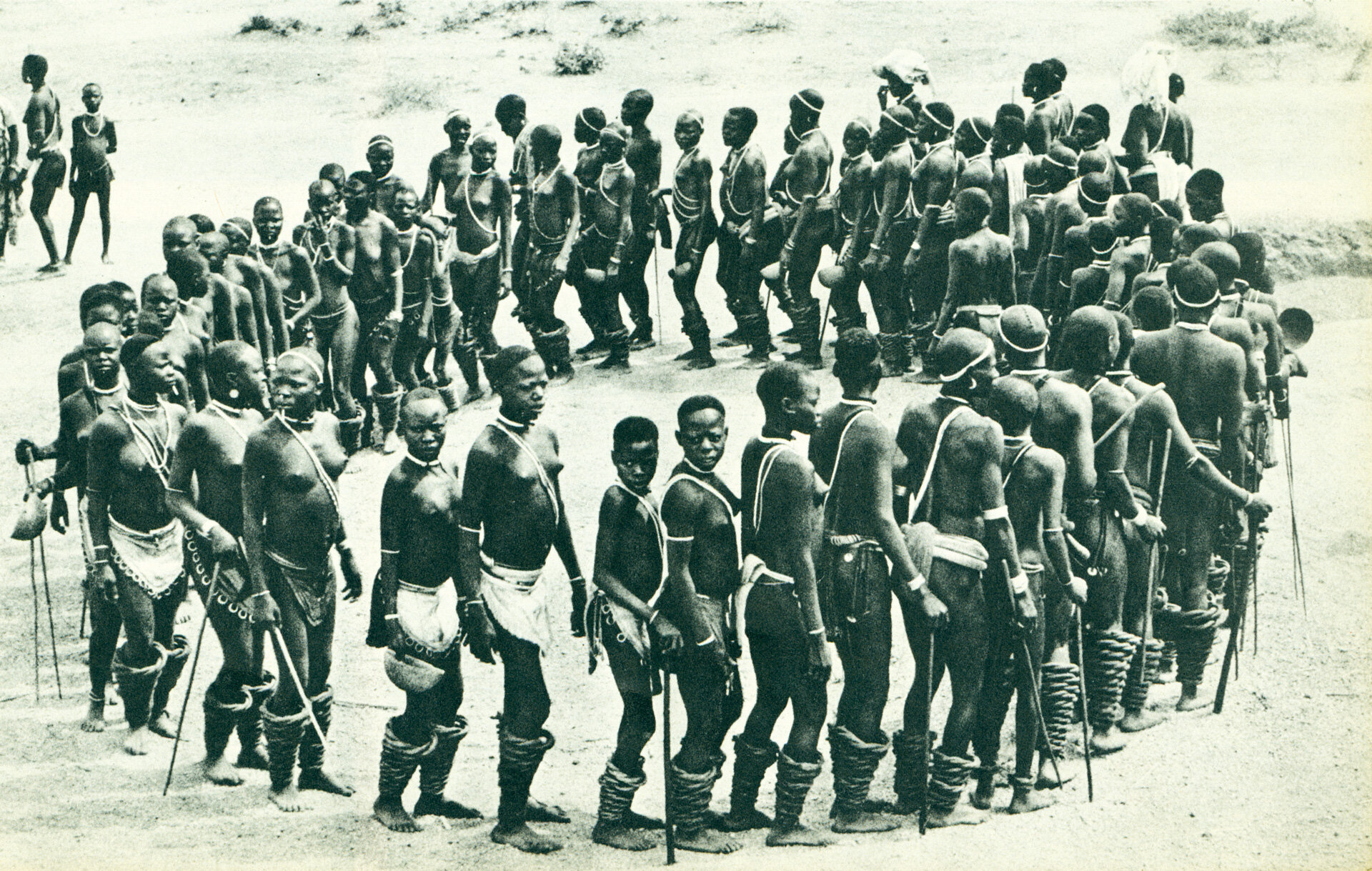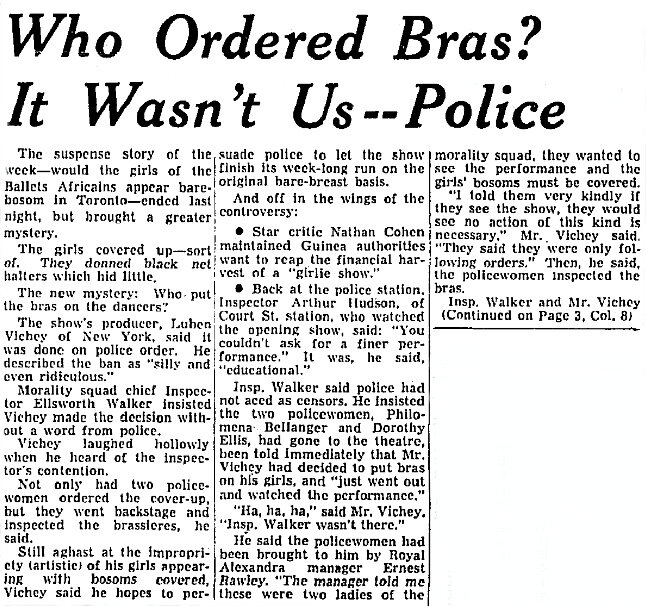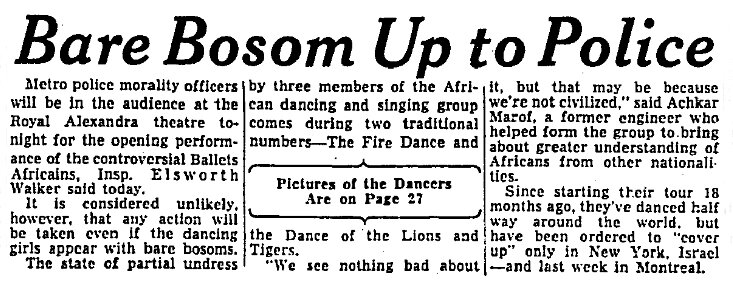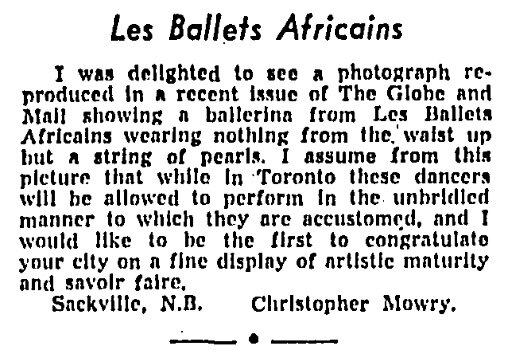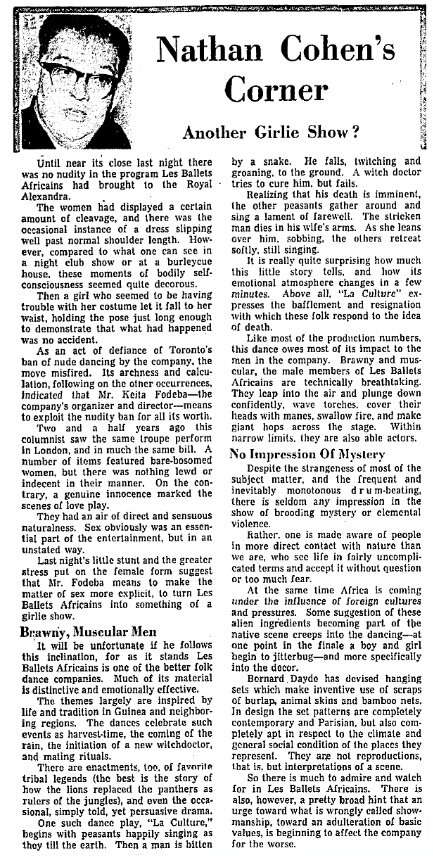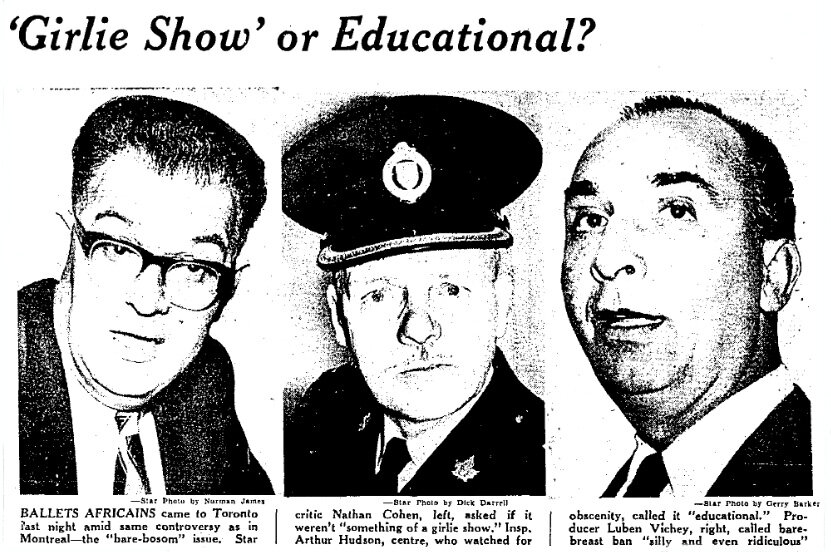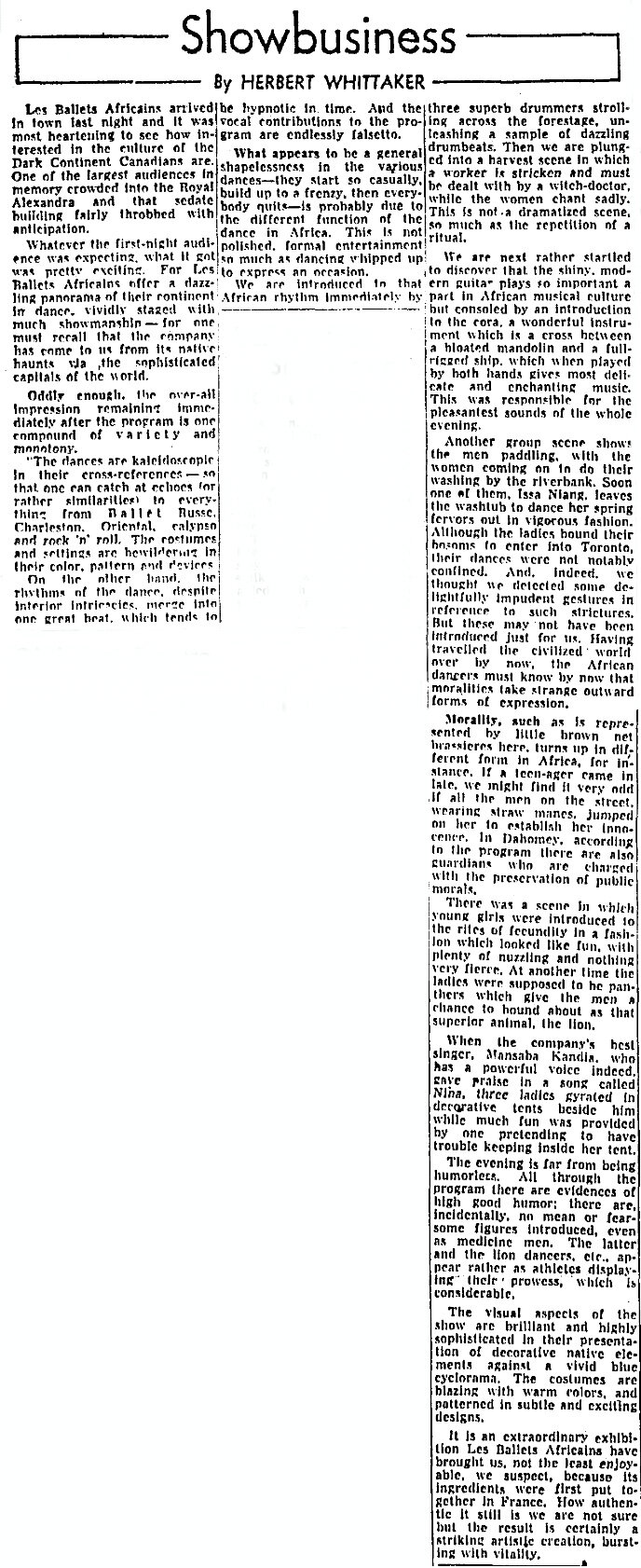Representation and Reception
The discussion of performance of any kind by Black people in Canada or North America requires an acknowledgement of how Black people were represented and written about by the dominant white culture.
Representation
The negative representation of people of the African Diaspora has been, and continues to be, a key tool of oppression. Blackface minstrel performance evolved in the mid-nineteenth century and was a highly structured performance model that had the mockery of Black people at its core. It was one of the most popular forms of entertainment in the late-nineteenth century and persisted as acceptable through much of the twentieth century. It continues in various ways today. A key aspect of minstrel performance was the use of unnaturally black make-up to darken the skin. Additional details to exaggerate eyes, nose and lips aimed to debase and humiliate Black people. Costuming catalogues had minstrel sections for attire, make-up and other props to enhance the characters that made up the minstrel show — the Mammy, Pickaninny, Creole, High Brown, Topsy, End Man, Fright Wig, Uncle Tom and Parson Blackface. Minstrel shows were not only performed on professional stages but were an active part of legion halls, community theatre and other amateur performance environments.
The practice of blackface was not only used in minstrel performance, it was also ingrained in classical western dance and theatre in place of casting Black and other people of colour. The use of make-up to portray nonwhite populations was so common as the accepted norm that text books on stage make-up described in detail how to attain the “proper” skin shades to represent various ethnic backgrounds. Here too, direction was provided to achieve the “correct” face, eye, cheekbone and mouth shape. This practice actively supported the exclusion of Black performers from amateur and professional stages, perpetuated the assumption that Black performers were not as skilled as white performers, and failed to challenge the systemic racism in which the practice was rooted. As can be noted in early twentieth-century cinema, Black people also participated in blackface — a practice that was divisive among Black cultural critics. This history demonstrates the complexity of representations of Blackness in the twentieth century.
Media Reception
Critical reception of Black performance by the media often only worked to reinforce the attitudes that informed minstrel mockery and the exclusion of Black performers from playing dignified and serious roles in the majority of professional productions. Media coverage of both Canadian and visiting artists frequently referred to dances as primitive and as coming from the “Dark Continent.” Even those reviews that were positive referred to Black artists and performers through language that exoticized, sexualized and infantilized them.
Les Ballets Africains
Les Ballets Africains was founded in Paris in 1952 by choreographer Keita Fodeba and became the National Ensemble of the Republic of Guinea in 1958. In 1959, the company toured to Montreal and Toronto. Two of the dances performed by the company were customarily performed topless by men and women. This was considered indecent by some citizens and the press provided extensive coverage of the back and forth between theatres, police boards, morality squads, producers, politicians and citizens. Despite the range of people interviewed for opinions, including a white showgirl, the press failed to ask the female dancers of Les Ballets Africains what they thought of the insistence that they wear bras during performance. Note the difference in the language used by the press and in “The Nature and Meaning of African Art” from the souvenir program.
Colour palette guide for mixing make-up to achieve “accurate”, “ethnic” complexions
Reproduction from Stage Make-up , 4th edition by Richard Corson (Appleton-Century-Crofts Education Division, New York, 1970 ed. from original publication in 1942).
On loan from the personal collection of Seika Boye
Dancers in Blackface for a recital by the Florence Clough Dance Studio, Victoria,British Columbia, 1920s.
On loan from the South Vancouver Island Dance Archives, Florence Clough Collection, 006-2014-2-3.
Theatrical players in Blackface, 1930
Reproduction of Image 20N, Box 1, Series 1024, University Settlement House Fonds, courtesy of City of Toronto Archives.
Page excerpt from Lester Ltd.’s Distinctive Costume Designs catalogue, Chicago, 1935
Reproduction, Flea Market Collection, Dance Collection Danse.
Cover of Lester Ltd.’s Distinctive Costume Designs catalogue, Chicago, 1935.
Reproduction, Flea Market Collection, Dance Collection Danse.
Lester Ltd.’s Distinctive Costume Designs catalogue, Chicago, 1935 Flea Market Collection, Dance Collection Danse
Petition, July 20, 1840, stating:
To his Worship the Mayor and the Corporation of Toronto. The subscribers of this humble petition represent to his Worship the Mayor, and the Corporation, that they have remarked with sorrow that the American Actors, who from time to time visit this City, invariably select for performance plays and characters which, by turning into ridicule and holding up to contempt the coloured population, cause them much heart-burning and lead occasionally to violence. They therefore respectfully entreat His Worship, and all those to whom the right pertains, to forbid in future the performance of plays likely to produce a breach of the public peace.
Your petitioners are, in all dutiful respect to you, Her Majesty’s devoted and loyal subjects.
Reproduction of item 605, Series 1081, Fonds 200, courtesy of City of Toronto Archives
Reproductions of a selection of articles from the mainstream press including the Toronto Daily Star and the Globe and Mail , March and April 1959.
Reproductions of a selection of articles from the mainstream press including the Toronto Daily Star and the Globe and Mail , March and April 1959.
Reproductions of a selection of articles from the mainstream press including the Toronto Daily Star and the Globe and Mail , March and April 1959.
Reproductions of a selection of articles from the mainstream press including the Toronto Daily Star and the Globe and Mail , March and April 1959.
Reproductions of a selection of articles from the mainstream press including the Toronto Daily Star and the Globe and Mail , March and April 1959.
Reproductions of a selection of articles from the mainstream press including the Toronto Daily Star and the Globe and Mail , March and April 1959.
Reproductions of a selection of articles from the mainstream press including the Toronto Daily Star and the Globe and Mail , March and April 1959.
Reproductions of a selection of articles from the mainstream press including the Toronto Daily Star and the Globe and Mail , March and April 1959.
Reproductions of a selection of articles from the mainstream press including the Toronto Daily Star and the Globe and Mail , March and April 1959.
